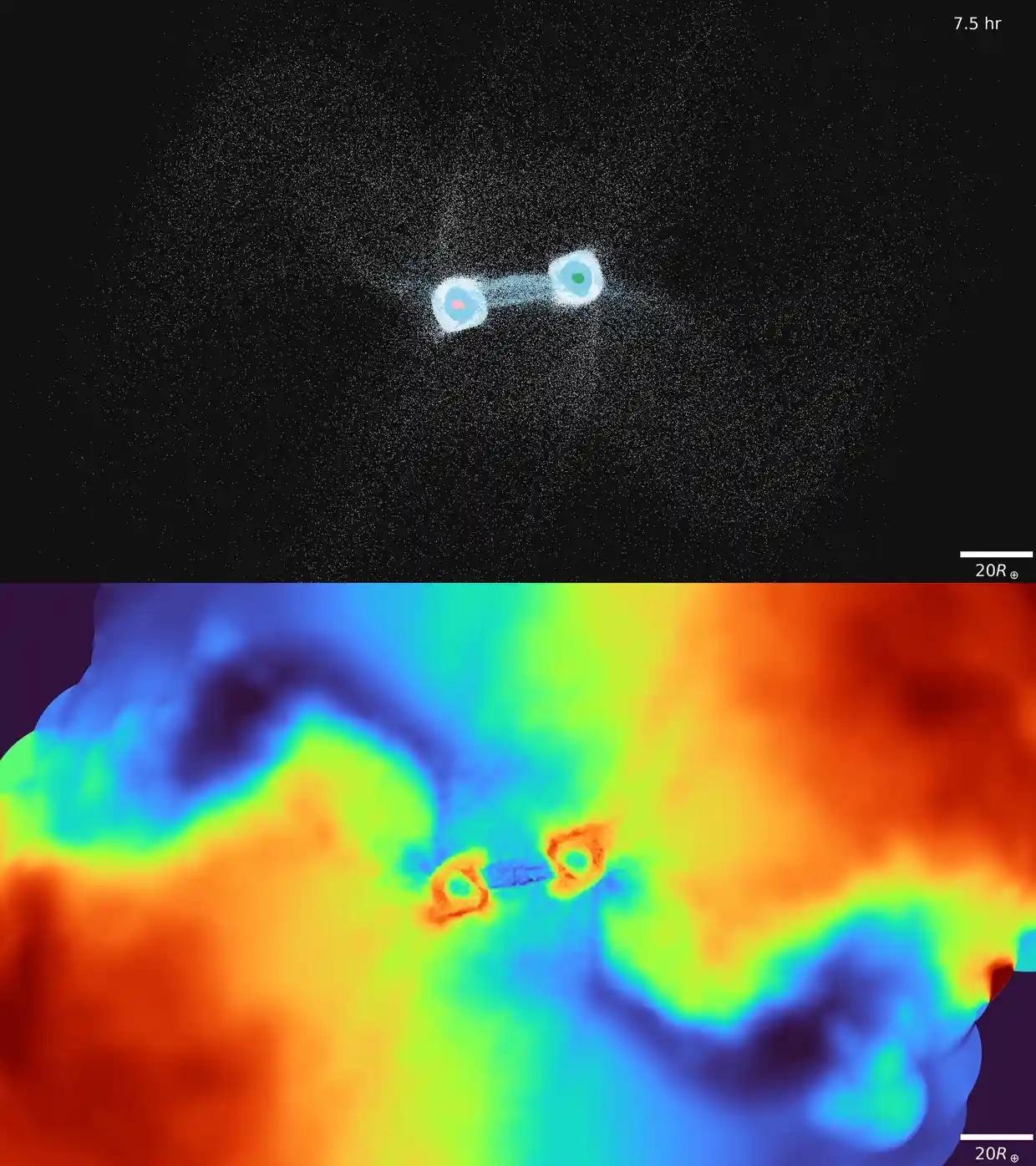13.10.2023
Collision of two ice giant planets produced hot, spinning object potentially hundreds of times the size of Earth

Computer simulations of the intense heat and bright vapour as the two ice giant planets collide in a distant space system 1,800 light years away from Earth. Photograph: Jingyao Dou/University of Bristol/PA
The warm afterglow of a worlds-shattering collision between two massive planets has been seen for the first time after astronomers trained their telescopes on a distant sun-like star.
The cataclysmic event is believed to have destroyed a pair of ice giant planets that slammed into one another to produce a shower of debris and a hot, spinning object potentially hundreds of times the size of Earth.
“It would be very spectacular,” said Dr Matthew Kenworthy, a co-lead author on the study at the Leiden Observatory in the Netherlands. “The energy of the collision would turn the remnant into something resembling a star, fainter than the main star in the system but about seven times larger in size, visible all through the rest of the stellar system.”
The discovery came about after an amateur astronomer responded to a social media post from Kenworthy about a star known as ASASSN-21qj. Kenworthy was looking for shadows cast by giant rings around planets as they cross the face of their parent star. ASASSN-21qj, which lies 1,800 light years from Earth, piqued his interest because in December 2021 it suddenly and inexplicably dimmed.
On reading the post, Arttu Sainio, a volunteer citizen scientist for Nasa, checked past observations of the star by Nasa’s Neowise mission, an infrared space telescope. He found that 900 days before the star dimmed, Neowise saw a steady and sustained brightening of infrared light from the same location.
“I was looking for something completely different,” Kenworthy said. “The infrared brightening told us something unusual had happened in the neighbourhood of this star, and so it took us down this new path.”
After a detailed analysis of the observations, the astronomers concluded that the blast of infrared radiation came from a hot new object or “synestia” created by the collision of two planets nearly as large as Neptune. Based on the infrared readings, the vast spinning object had a temperature of more than 700C for about three years. It will eventually cool and form a new planet around the star.
According to details published in Nature, the star began to dim about 2.5 years after the afterglow began as a massive cloud of fine impact debris drifted across the face of the star.
“It’s the first time we’ve seen the afterglow from such an event,” said Simon Lock, another co-lead author at the University of Bristol. “We’ve seen debris and discs before, but we have never seen the afterglow of the planetary body that’s produced.”
Astronomers are now keen to follow up the observations to confirm what they suspect has unfolded. If the dust cloud continues to orbit the star, then in about five to 10 years the cloud will have moved to one side of the star and astronomers should see the star’s light reflected from the dust with the largest ground-based telescopes, Kenworthy said.
It may also be possible for the James Webb Space Telescope to detect infrared radiation from the dust and the new planet created in the collision.
Quelle: The Guardian
